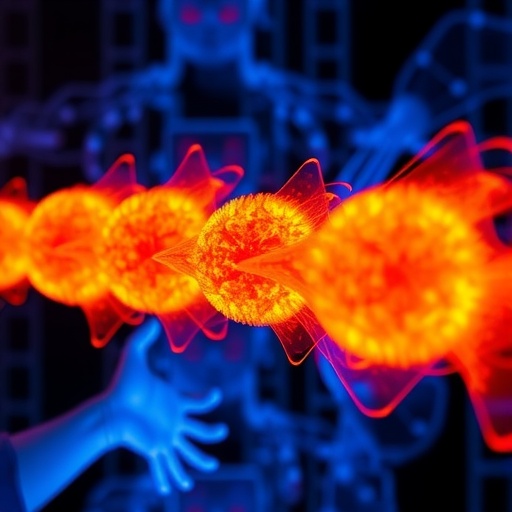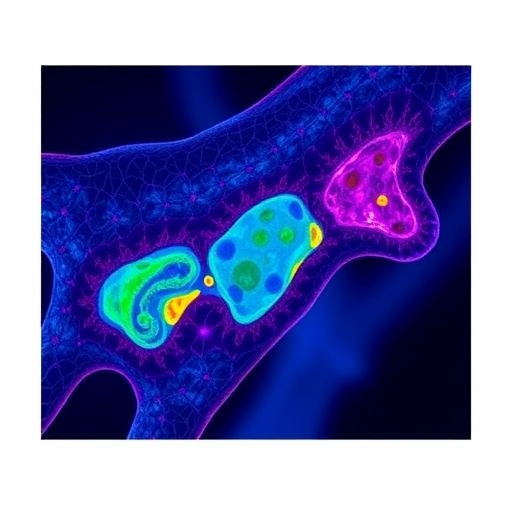High-resolution energetic insights into protein conformational ensembles represent a frontier in our quest to unlock the complexities of protein function. With an ever-growing emphasis on precision in biological research, scientists are continuously seeking methods that offer detailed structural and energetic data about proteins. In this regard, a novel approach named PIGEON-FEATHER has emerged, setting a new standard in calculating ensemble free energies of opening, particularly ∆Gop, at a resolution that can approach single-amino-acid specificity. This innovative methodology leverages hydrogen exchange–mass spectrometry (HX–MS) data, a prominent technique in the structural biology toolkit.
PIGEON-FEATHER stands out due to its ability to disambiguate and reconstruct experimental measurements of isotopic mass envelopes derived from HX–MS. The core of this method lies in its application of a Bayesian Monte Carlo sampling approach, which accounts for the inherent complexities and variabilities in experimental data. This sophisticated statistical technique allows for more accurate modeling of the dynamic behavior of proteins, hence unveiling the intricate ballet of conformations they undergo during various biological processes.
The application of PIGEON-FEATHER to proteins such as Escherichia coli dihydrofolate reductase (ecDHFR) and human dihydrofolate reductase (hDHFR) has revealed striking differences in their conformational ensembles. These enzymes, while serving similar functions in their respective organisms, exhibit unique structural characteristics influenced by evolutionary pressures. By employing PIGEON-FEATHER, researchers were able to discern how binding interactions with two competitive inhibitors are mediated differently across these orthologs. Understanding these distinctions solves a long-standing question in pharmacology regarding the efficacy of therapeutic agents that target these important enzymes.
One of the inhibitors studied binds effectively to ecDHFR but shows limited effectiveness against hDHFR. The insights gained through PIGEON-FEATHER help explain this discrepancy at a molecular level, illustrating the nuances of binding affinity influenced by the conformational landscape of each enzyme. This shift in understanding not only enhances our basic knowledge of protein function but also has implications for drug design and the development of more effective therapeutic agents.
The adaptability of PIGEON-FEATHER extends beyond single enzymes. Its recent application to a larger protein–DNA complex demonstrates its versatility and potential in deciphering more intricate biological systems. The investigation of the E. coli lac repressor showcased how ligand-induced ensemble reweighting occurs, elucidating the functional switching mechanisms that are essential for transcriptional regulation. This research marks a significant advancement in the ability to quantitatively analyze how proteins respond to ligand binding over time in a dynamic cellular environment.
As the field moves forward, the high-resolution energetic information derived from methods like PIGEON-FEATHER can be a game-changer for understanding protein dynamics. The implications of this research are expansive, ranging from basic science to applied biomedical fields. With a clear window into protein mechanisms, scientists can therapeutically target and manipulate protein interactions with unprecedented precision.
Moreover, the Bayesian Monte Carlo technique integral to PIGEON-FEATHER reinforces the growing trend of using advanced computational methods to interpret complex biological data. By integrating statistical rigor with experimental findings, researchers can achieve more reliable results that enhance the reproducibility of findings in protein science. This aspect is particularly crucial as the scientific community continues to grapple with the reproducibility crisis—having tools that yield dependable data fosters confidence in research outcomes.
In conclusion, PIGEON-FEATHER represents an exciting leap forward in structural biology, aiming to bridge the gap between experimental data and the theoretical understanding of protein dynamics. The endeavor to unravel conformational landscapes at the level of individual amino acids is a testament to the increasing sophistication of techniques available to researchers today. As the understanding of protein dynamics deepens, so too will our strategies for drug discovery and the treatment of various diseases that hinge on protein interactions.
As the research community eagerly anticipates further applications of PIGEON-FEATHER, it paves the way for potential breakthroughs that could revolutionize fields spanning drug design, synthetic biology, and disease modeling. With ongoing developments, this method could very well set the trajectory for future innovations, ultimately unlocking new therapeutic paths that were previously unimaginable.
Amidst this wave of excitement, the current findings remind us that the journey to fully comprehend the intricate behavior of proteins is ongoing. Each study builds upon the last, driving us closer to a complete understanding of biological mechanisms at the molecular level. As research unfolds, the community remains committed to leveraging groundbreaking techniques like PIGEON-FEATHER in the pursuit of knowledge and advancements in healthcare.
Embarking upon this transformative research journey, every aspect emphasizes that mastering the art of protein dynamics not only enhances fundamental scientific understanding but also holds the keys to the future of medicine. Ultimately, the revelations stemming from PIGEON-FEATHER allow for a deeper appreciation of life’s molecular machinery—an attestation to the tireless endeavors of scientists committed to unraveling the mysteries of protein function.
Subject of Research: Protein conformational ensembles and their energetic landscapes.
Article Title: Site-resolved energetic information from HX–MS experiments.
Article References:
Lu, C., Wells, M.L., Reckers, A. et al. Site-resolved energetic information from HX–MS experiments.
Nat Chem Biol (2025). https://doi.org/10.1038/s41589-025-02049-1
Image Credits: AI Generated
DOI: https://doi.org/10.1038/s41589-025-02049-1
Keywords: Protein dynamics, conformational ensembles, hydrogen exchange, mass spectrometry, Bayesian Monte Carlo, drug design, therapeutic targeting.
Tags: Bayesian Monte Carlo sampling in biophysicsenergetic insights in structural biologyensemble free energies of openingEscherichia coli dihydrofolate reductase studyhigh-resolution protein conformational ensembleshuman dihydrofolate reductase conformational analysishydrogen exchange–mass spectrometry techniquesisotopic mass envelope reconstructionPIGEON-FEATHER methodologyprecision in biological researchprotein dynamics modelingprotein function complexities





